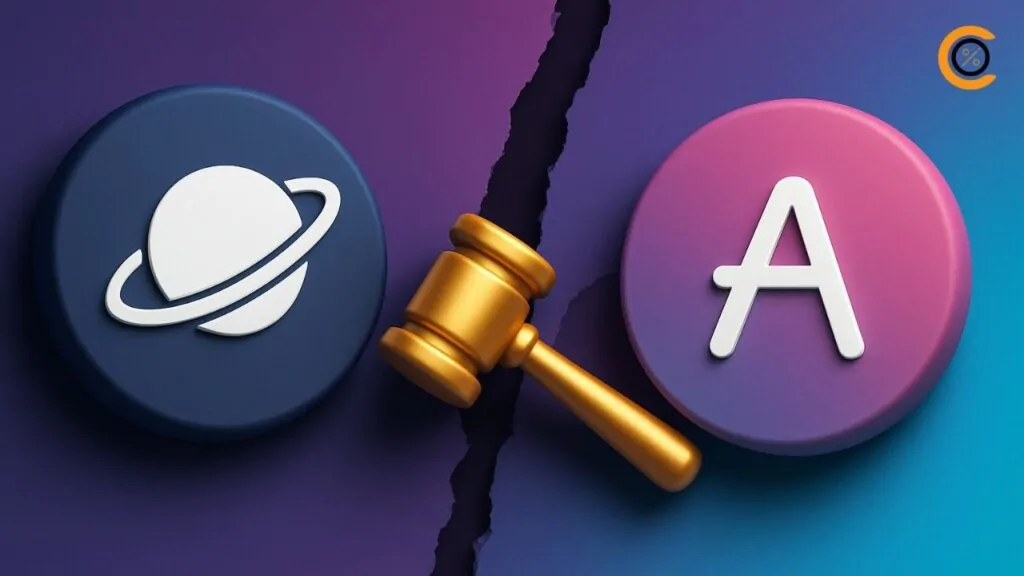- •The SEC’s Crypto Assets Task Force is reviewing the Post-Quantum Financial Infrastructure Framework (PQFIF) to protect digital assets.
- •Quantum computing could threaten Bitcoin, Ethereum, and other cryptocurrencies as early as 2028, raising systemic risk concerns.
- •The PQFIF proposes a phased migration to quantum-proof standards, focusing first on institutional wallets and exchanges.
- •Bitcoin and Ethereum developers are already testing quantum-resistant cryptographic solutions.
- •Global regulators and private firms are launching parallel initiatives, highlighting the urgency of early preparation.
The U.S. Securities and Exchange Commission’s (SEC) Crypto Assets Task Force is currently reviewing a framework urging regulators to secure digital assets against emerging quantum computing risks. The call to adopt quantum-proof standards highlights concerns that Bitcoin, Ethereum, and other cryptocurrencies could face major security challenges in the near future.
A Proposal for Post-Quantum Protection
The framework, called the Post-Quantum Financial Infrastructure Framework (PQFIF), was authored by Daniel Bruno Corvelo Costa and submitted to the SEC in September 2025. It presents a roadmap for gradually transitioning digital assets from their current cryptographic protections to post-quantum methods.
The proposal notes that existing cryptographic signatures, which secure wallets, exchanges, and payment systems, were not designed with quantum threats in mind. As quantum computing advances, these protections could be broken, putting trillions of dollars in assets at risk.
The “Harvest Now, Decrypt Later” Concern
A central issue raised in the PQFIF is the so-called “Harvest Now, Decrypt Later” strategy. Adversaries may already be collecting encrypted financial data, even if they cannot currently crack it. Once cryptographically relevant quantum computers (CRQCs) reach sufficient power, this stored information could be unlocked at once.
Analysts warn that such a breakthrough, commonly referred to as “Q-Day”,might arrive as early as 2028, though some estimates extend the timeline into the 2030s. The unpredictability of this timeline makes early preparation essential.
Key Recommendations in the Framework
The PQFIF sets out a phased strategy for addressing these risks:
- Automated scanning: Regular checks to identify outdated cryptographic systems across wallets, exchanges, and custody platforms.
- Prioritization: Migration should begin with high-value and high-risk systems, such as institutional wallets and custodial solutions, before extending to other platforms.
- Dual systems: Use of both classical and quantum-resistant cryptography during the transition to avoid disruption.
- Regulatory oversight: Clear compliance deadlines, audits, and reporting requirements to ensure timely adoption.
These recommendations are aligned with standards finalized by the National Institute of Standards and Technology (NIST) in 2024 and 2025, such as FIPS 203–205 and HQC, ensuring the shift relies on recognized and trusted methods.
Bitcoin and Ethereum Developer Responses
The industry itself has begun exploring quantum-safe solutions. In July 2025, Bitcoin developers proposed the “Post Quantum Migration and Legacy Signature Sunset”, a phased plan to retire older signature systems vulnerable to quantum attacks. The proposal suggests blocking transactions to unsafe addresses first, followed years later by freezing funds in such addresses permanently.
Ethereum is also preparing through pilot programs. Developers are testing lattice-based and hash-based algorithms resistant to quantum decryption, with plans for mainnet trials by 2026. These steps underline the urgency of preparing both at the regulatory and technical levels.
Global and Private Sector Initiatives
The SEC’s review of PQFIF is part of a broader international push toward post-quantum readiness. The European Union has directed member states to begin migration by 2026, with full protection required by 2030. Countries like France, Germany, and the Netherlands already have national strategies in motion.
Meanwhile, private companies are investing heavily. Firms such as BTQ Technologies and SEALSQ have launched pilots for quantum-safe custody and digital signatures, while El Salvador has distributed its Bitcoin holdings across multiple wallets to reduce exposure to a potential single-point failure.
These moves highlight how both regulators and the private sector are treating quantum risk not as a distant possibility, but as an urgent matter requiring immediate planning.
Why This Matters for Digital Asset Security
The cryptography protecting today’s digital assets could one day be compromised by advances in quantum computing. Without a proactive transition, markets face the risk of systemic failures, catastrophic investor losses, and erosion of confidence.
By reviewing the PQFIF and encouraging industry adoption of quantum-proof standards, the SEC’s Crypto Assets Task Force is being urged to act before quantum capabilities catch up. The framework emphasizes early, phased action to secure Bitcoin, Ethereum, and the wider digital economy.
Closing Thoughts
The SEC’s consideration of a quantum-proof plan marks a significant step in recognizing the scale of the threat. Digital assets such as Bitcoin and Ethereum remain secure today, but experts stress that the window for building defenses is narrow. Ensuring a coordinated migration to post-quantum standards will be essential to protecting investors and preserving confidence in digital assets.
- SEC – Post-Quantum Financial Infrastructure Framework (PQFIF) (Sep 3, 2025)
- Cointelegraph – SEC’s crypto task force urged to quantum-proof digital assets (Sep 4, 2025)
- Mitrade – Stakeholders urge US SEC to secure crypto with quantum-proof methods (Sep 4, 2025)
- Coinfomania – SEC Reviews Quantum Proof Plan For Bitcoin And Ethereum (Sep 4, 2025)







